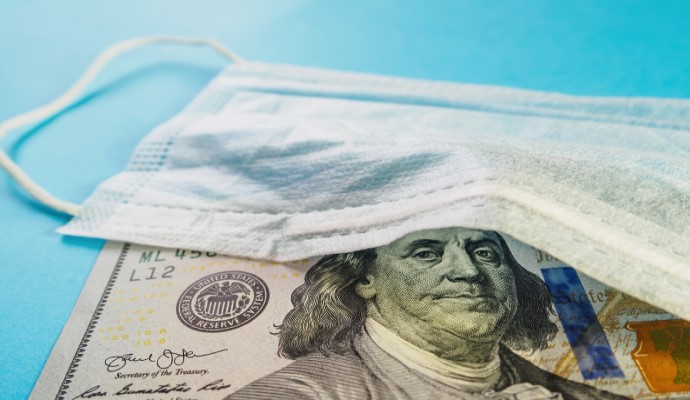MedPAC Recognizes Impact of Inflation on Docs, Suggests Higher Rates
The advisory group also voted to recommend an add-on payment for physicians serving more low-income beneficiaries.

Source: Getty Images
- The Medicare Payment Advisory Committee (MedPAC) recommended increasing physician payment rates based on an inflation-based index for Medicare.
The independent advisory group suggested in its March 2023 “Report to Congress” that lawmakers update the 2023 Medicare base payment rate for physician and other health professional services by 50 percent of the expected increase in the Medicare Economic Index (MEI).
“Because clinicians’ practice expenses account for about half of the MEI, this recommendation would help ensure that payment rates keep pace with the growth of clinicians’ practice costs,” the group stated in the report.
The MEI measures the average annual price change for the market basket of inputs used by clinicians to deliver services after adjusting for economy-wide productivity. The index comprises two main categories: physician compensation and physician practice expenses, MedPAC explained in the report.
The MEI has increased significantly over the past decade, exceeding the 6 percent cumulative boost in annual updates to the Medicare Physician Fee Schedule rates. However, rising volumes and intensity of services have offset the MEI increase, keeping fee schedule spending in line.
Now, physician practice expenses are climbing faster compared to recent years. MedPAC reported that the MEI grew by 2.6 percent in 2021 and is estimated to have grown by 4.7 percent in 2022. CMS anticipates the MEI to grow even more in the coming years, with a projected 3.9 percent increase in 2023 and a 2.9 percent increase in 2024.
In light of the projected growth, MedPAC recommended tying updates to physician payment rates to the MEI for the first time. If implemented, the action would increase payment rates by 1.45 percent.
The American Medical Association (AMA) has backed MedPAC’s recommendation, but calls for more support for physicians coping with the inflationary environment.
“Having surveyed the [healthcare] landscape, MedPAC recognized that physician pay has not kept up with the cost of practicing medicine. Yet, we feel strongly that an update tied to just 50 [percent] of MEI will cause physician payment to chronically fall even further behind increases in the cost of providing care. Congress should adopt a 2024 Medicare payment update that recognizes the full inflationary growth in health care costs,” AMA President Jack Resneck Jr, MD, said in a statement.
The Medical Group Management Association (MGMA) also felt the recommended increase would not go far enough to cover annual medical practice cost increases, calling the increase “grossly insufficient.”
“Medical practices have been suffering from significant staffing shortages and cost increases across the board,” Anders Gilberg, SVP of government affairs at MGMA, explained in a statement. “An update of any amount less than the full MEI will not adequately remedy the negative impact of the broader economy on practices’ financial stability.”
AMA pointed out that Medicare physician payments have fallen by 26 percent from 2001 through 2023 when adjusted for inflation. Meanwhile, physicians are facing a 2 percent pay cut this year.
Physicians worry that inadequate Medicare payment could impact access to care, especially for low-income and other historically marginalized populations.
To better support safety-net providers who care for more low-income patients, MedPAC also suggested that Medicare provide a “targeted add-on payments of 15 percent to primary care clinicians and 5 percent to all other clinicians for physician fee schedule services provided to Medicare beneficiaries enrolled in the Part D low-income subsidy program.”
